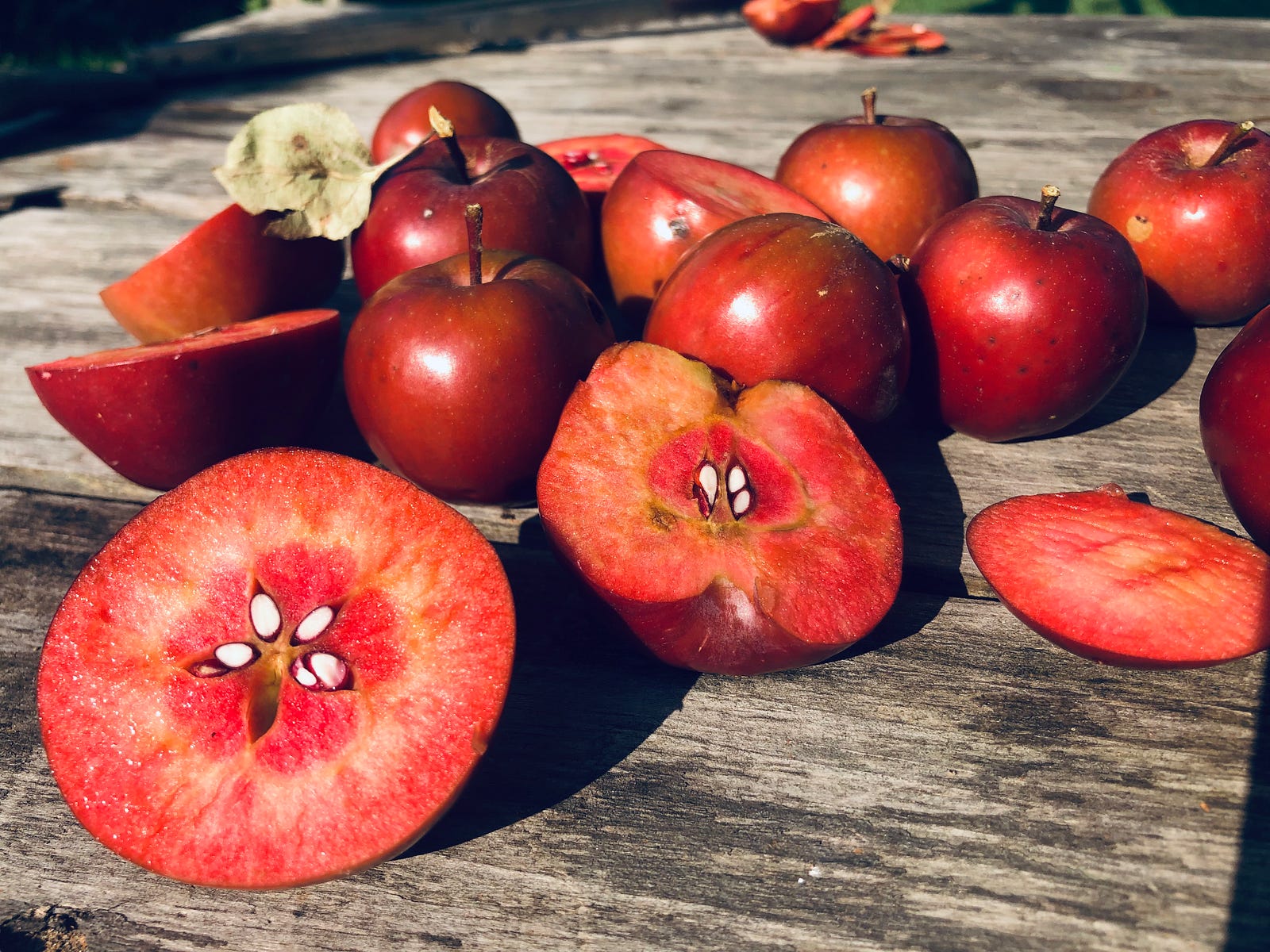
Finally, biodiversity is having a moment.
At the UN Climate Action Summit in September, Emmanuel Faber, CEO of Danone, announced the launch of the One Planet Business for Biodiversity (OP2B) coalition, stating, “We thought we could engineer the life that we needed and kill the rest in the fields. The resulting monocropping consequences are standing right in front of us.”
Government and large-scale business decision-makers are coming to terms with two sides of a coin of ecological reality: Biodiversity has immense inherent value on our planet, AND the ongoing devastation of biodiversity will drastically decrease global human quality of life.
Biodiversity is a key factor in the earth’s provision of ecosystem services — including biomass production, nutrient and water cycling, and soil formation and retention — but the ongoing, mounting losses to biodiversity are not simply an environmental issue. The IPBES Global Assessment Report on Biodiversity and Ecosystem Services states that “Current negative trends in biodiversity and ecosystems will undermine progress towards 80% of the Sustainable Development Goals, related to poverty, hunger, health, water, cities, climate, oceans and land.”
I can assure you: this article isn’t a fear-mongering account of the real-life implications of biodiversity loss. Rather, this is an invitation — for companies, growers, and consumers — to take stock of your current understandings of biodiversity and situate them in a more encompassing and holistic framework.
WHAT IS MISSING FROM THE CONVERSATION ABOUT BIODIVERSITY?
This level of global acknowledgment is a hopeful sign. However, it is critical to note two major limitations to how biodiversity is currently being approached.
- Limitation #1: In the business community, “biodiversity” is often understood and recognized as “the diversity of agricultural crops used in our products.” From this lens, oats or lentils become “biodiverse” crops because they are less common agricultural commodities, even if they are still grown in industrial-scale chemical monocultures.
- Limitation #2: In the academic community, a well-established categorization limits biodiversity to the confines of three levels: genetic diversity within a species, species diversity within a population, and ecosystem diversity within a region.
The academic approach offers more nuance than the business perspective. But in the context of increasing attention for biodiversity, there is an opportunity here: We can significantly enhance the impact of our strategies and actions by evolving the framework through which we work. The following eight-level understanding of biodiversity offers a new lens that can spark improved design and creativity towards positive global impact.
A NEW APPROACH: THE EIGHT-LEVEL BIODIVERSITY FRAMEWORK
Corporate decisions about product design, raw materials, farming practices, and sourcing standards have significant impacts on all levels of biodiversity, and potential outputs vary accordingly. While each level can be a source of innovation — for ingredients, flavors, chemical compounds, and even culinary creativity — companies must design for net-positive impacts on biodiversity or risk serious destabilization to their supply chains and the global stock of natural capital upon which all life depends.
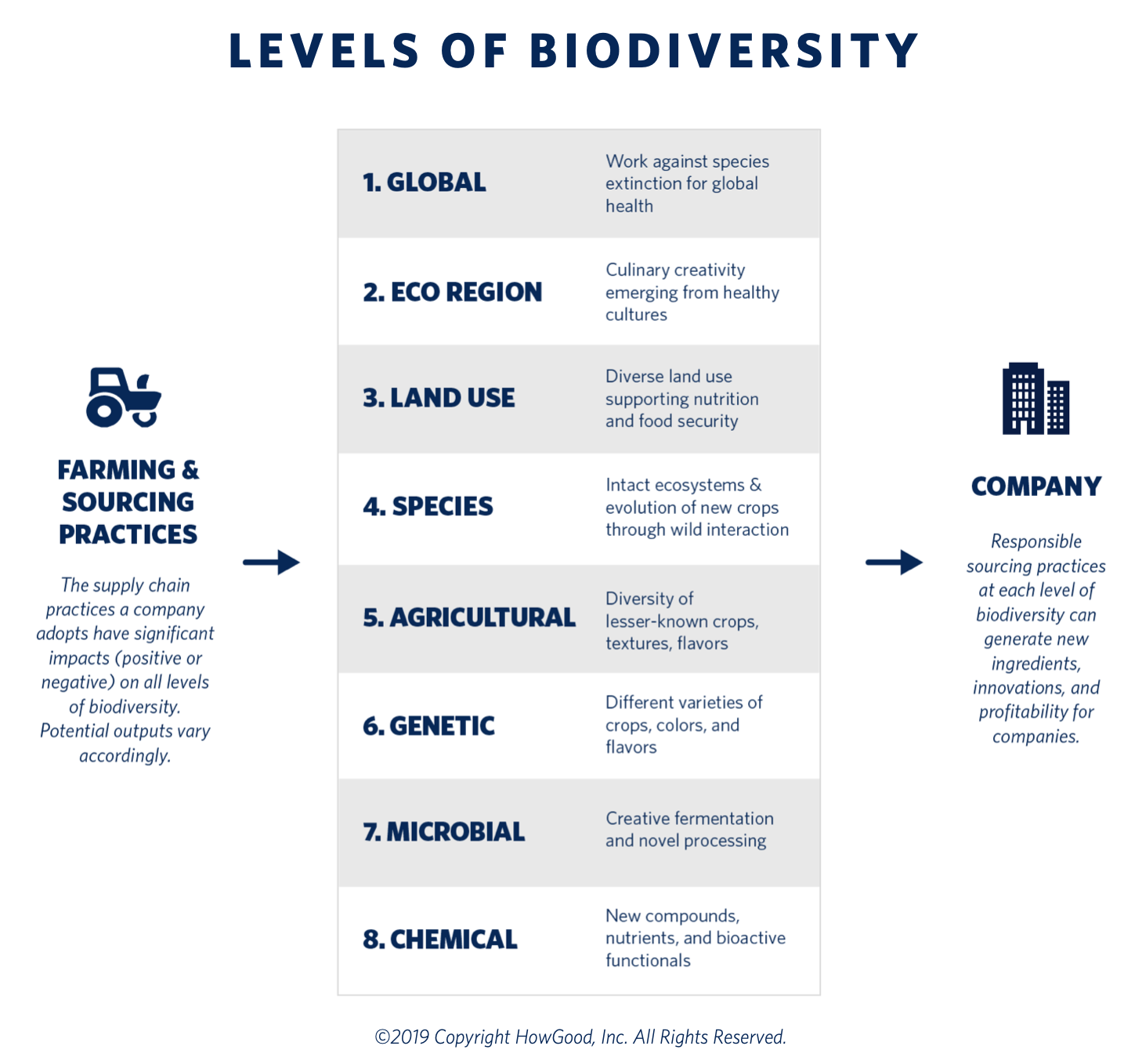
GLOBAL BIODIVERSITY
This level accounts for the sum total of life and total variability of life forms on Earth. It’s where we identify endangered and threatened species and map biodiversity hotspots. At least 10,000 species are going extinct every year. Addressing the long-term consequences of biodiversity loss through the lens of this level is critical in fighting to work against species extinction for global health.
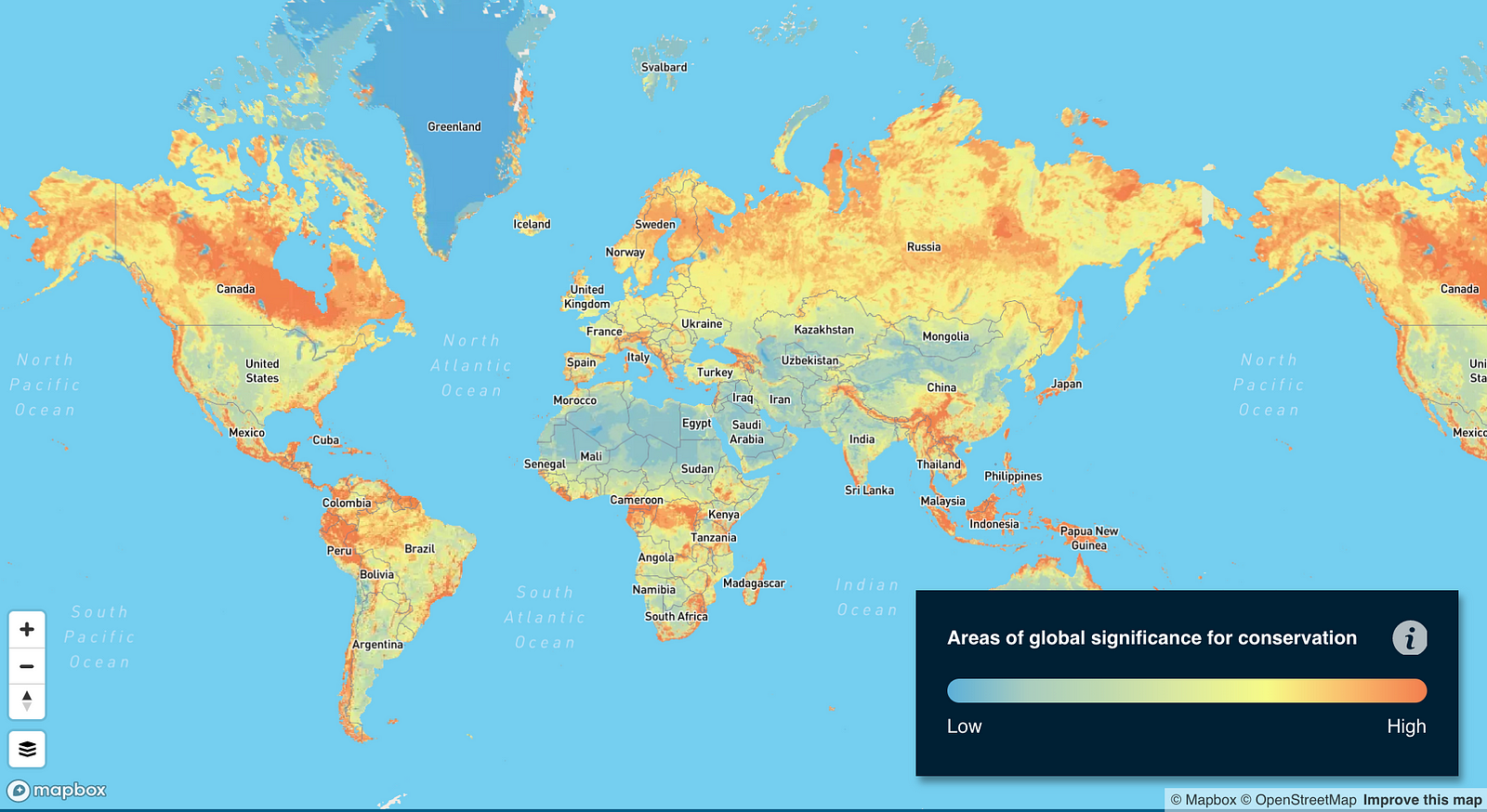
ECO REGION BIODIVERSITY
Here, we look at biodiversity across an entire region, taking into account the makeup of the land and the richness of species across it. Most rarefied and sought-after provisions, from a Bordeaux wine that can only come from Bordeaux, to a Parmiagianno Reggiano that can only come from Parma, these are the products of the unique eco-regions and cultural histories from which they are cultivated. When biodiversity is supported at this level, there is potential for great culinary creativity — new dishes, new products, new remixes of ancient foods — that can emerge from healthy ecological-cultural complexes.
LAND USE BIODIVERSITY
This level looks at land in terms of form and function: the types of land that can exist in a given watershed and the diversity in how those pieces of land are used. In a given watershed, does there exist land that is being maintained as an old-growth forest, converted into a tree crop farm, or developed into an urban garden? How do those landscapes integrate and interact? An ecosystem composed of diverse landscapes with different functions directly supports nutrition and food security.
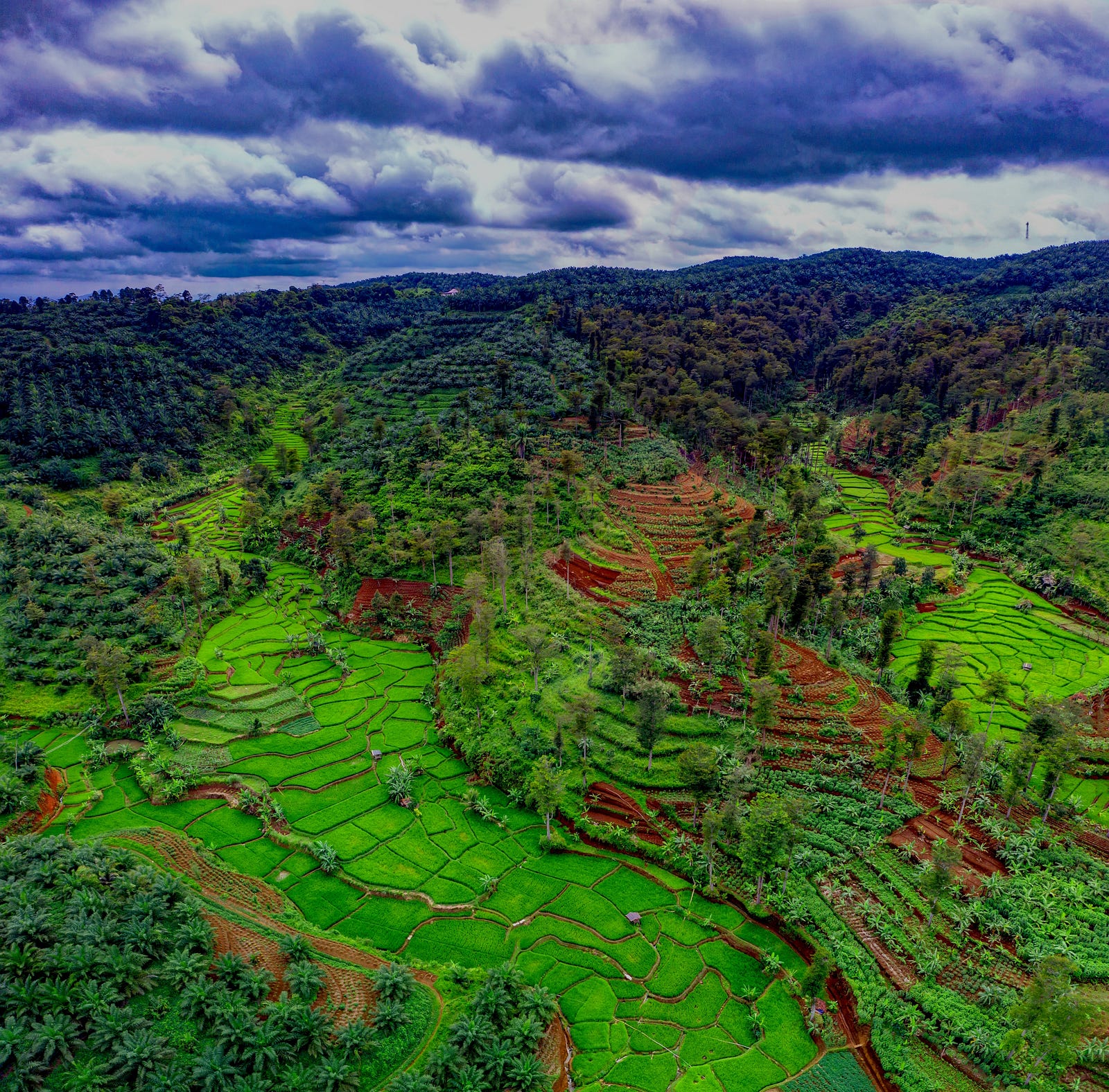
SPECIES BIODIVERSITY
Species biodiversity accounts for the differences within and between populations of species as well as the variety of species within a habitat or region. It is critical that we observe interactions among and between species to understand how anthropogenic actions are affecting an ecosystem. We’re currently in the midst of the sixth mass extinction of species, losing species at up to 1,000 times the natural rate of 1–5 species per year. 99% of threatened species are at risk of extinction from the effects of human activities. Continuing to address biodiversity at the species level can create intact ecosystems and the evolution of new crops through wild cultivation.
AGRICULTURAL BIODIVERSITY (AKA AGROBIODIVERSITY)
This is the level of diversity that most product manufacturers identify as the sum total of biodiversity. Promoting agricultural biodiversity is indeed important: while more than 6,000 plant species have been cultivated for food, only 9 species account for 66% of total crop production. Increasing agricultural biodiversity doesn’t just improve the variety of our diet, but enhances soil and water health, increases pest and disease resistance, and reduces the need for external inputs.
Brands are taking a step in the right direction. Lush Cosmetics is reintroducing native crops and reducing land conversion on smallholder farms in Guatemala, while integrating a breathtaking array of underutilized plants into its diverse products. Smaller brands like Kuli Kuli, Yolele, and Global Breadfruit are rapidly increasing market demand for lesser-known food crops. We know that seeking to achieve greater agricultural biodiversity can lend itself to the development of lesser-known flavors, textures, and scents.
However, the popular inclination to concentrate biodiversity efforts solely at the agricultural level can be limiting. Not only are companies who confine their scope to the agricultural level missing out on the positive impacts made possible only by addressing other levels, but they are ultimately foregoing innovation, creativity, and market differentiation in their products. There are clear benefits to both the brand and the planet.
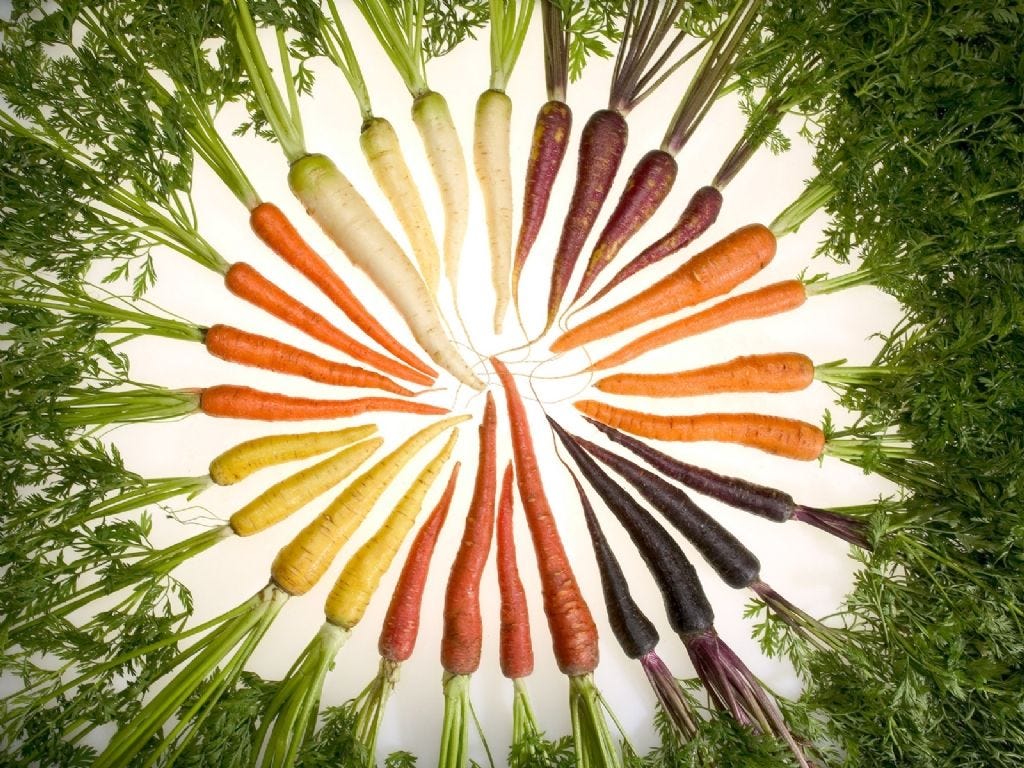
GENETIC BIODIVERSITY
Genetic diversity, the variety of genes within a species, is critical: high genetic diversity allows for species to maintain resilience against pests and pathogens and adapt to changing environments. Of the over 10,000 varieties of apples that have been ever cultivated, only 100 are now grown commercially in the US, and only 15 account for almost 90% of national production. Addressing genetic biodiversity can produce different varieties of crops, colors, and flavors, with different tastes, resistances, and nutrient profiles.
MICROBIAL BIODIVERSITY
The health of all living things — of the soil, the microbiome of animals, the leaves of trees — is indicated by and depends on its microbial composition. Healthy soil is resilient, teeming with bacteria, fungi, algae and protozoa, and is able to cycle nutrients and make them available to organisms. Some of the most treasured heritage foods in the world are a product of the unique sets of microbes that live within the soil in which it is grown. Innovation at the microbial level is directly responsible, for example, for the lactobacillus bulgaricus bacteria in sour beer and probiotic yogurt. Allowing for a diverse set of microbes to flourish in the soil can give way to creative fermentation and novel processing.
CHEMICAL BIODIVERSITY
Brands are realizing the myriad of opportunities at the chemical level in creating new compounds, nutrients and bioactive functionals that can boost skin health, heart health, and digestion. Cultivating a diverse variety of grapes can produce a wider range of wines packed with different antioxidants, while developing diverse probiotics can maintain a healthy skin microbiome. A greater biodiversity of food can create a greater variety of chemical compounds, each with its own set of benefits for human and ecosystem health.
WHY SHOULD BRANDS PAY ATTENTION TO BIODIVERSITY?
Quite simply, because biodiversity loss benefits no one. Most current agricultural practices and the majority of the ingredients in our food are significant contributors to global biodiversity loss.
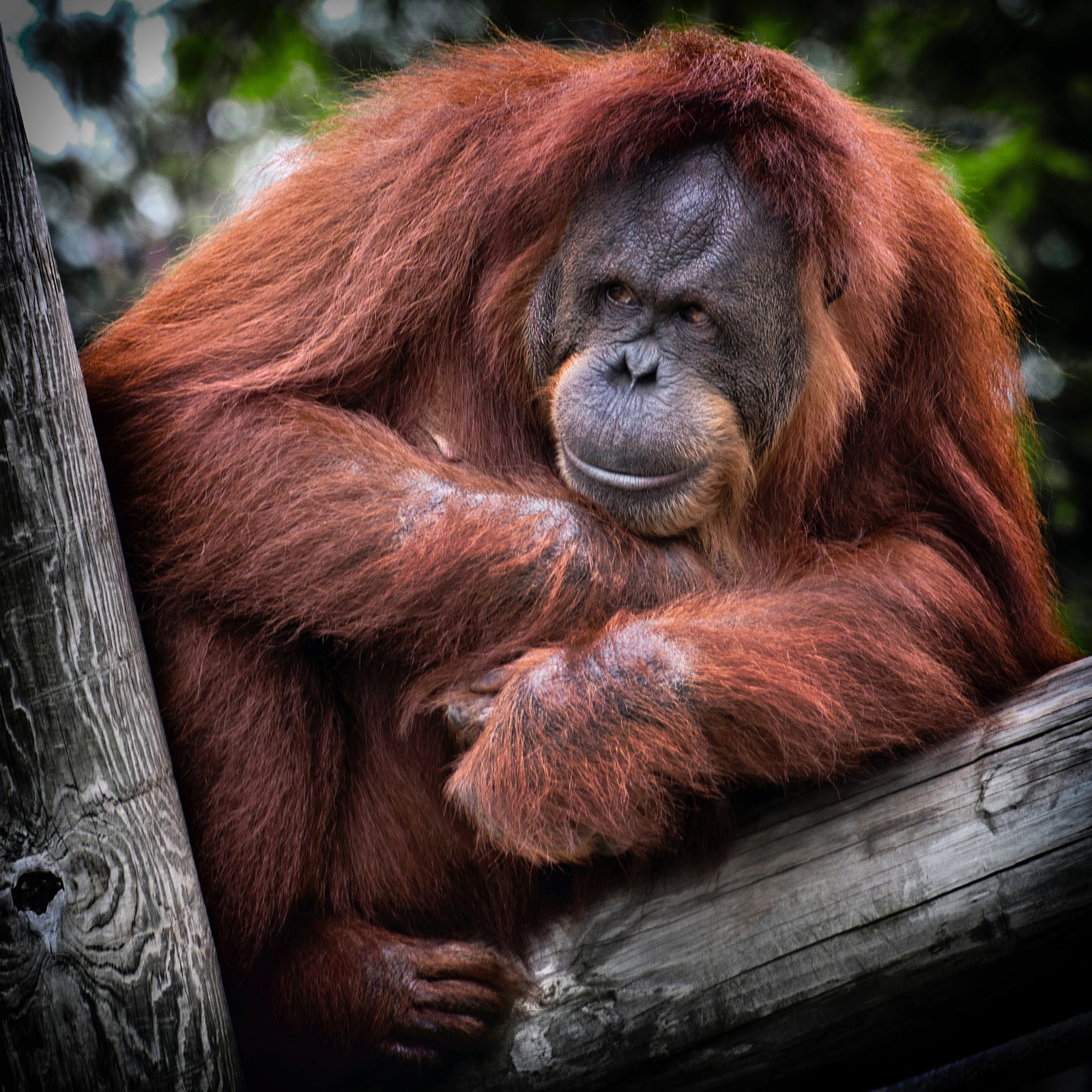
Take palm oil, for example. It thrives in the tropics, is largely grown as a monoculture, and is in approximately 50% of consumer products. Its production requires large-scale land conversion that not only increases greenhouse gas emissions, smoke-haze and water pollution, but also affects at least 405 species globally, 193 of which are critically endangered, endangered or vulnerable. Despite the attractiveness of short-term financial gain, no one profits from species going extinct.
Brands are beginning to understand the impending threat of biodiversity loss and realize the opportunity for greater market growth and differentiation in their products. The OP2B coalition, formed by 19 companies with combined total revenue of $500 billion, is pledging to diversify their product portfolios and initiate large-scale change across their brands. Emmanuel Faber of Danone promised: “Using the thousands of brands we have in our [OP2B] portfolio, we will create a demand for a variety of crops, of species, of traditional seeds that are forgotten today, that are dying.”
Measuring progress in biodiversity impact can be difficult, but incorporating it as a key performance indicator will prove to be transformative. Brands that utilize metrics for tracking biodiversity, then subsequently place an emphasis on improving their practices across multiple levels, will inevitably put into motion a multiplier effect of positive impact on sustainability.
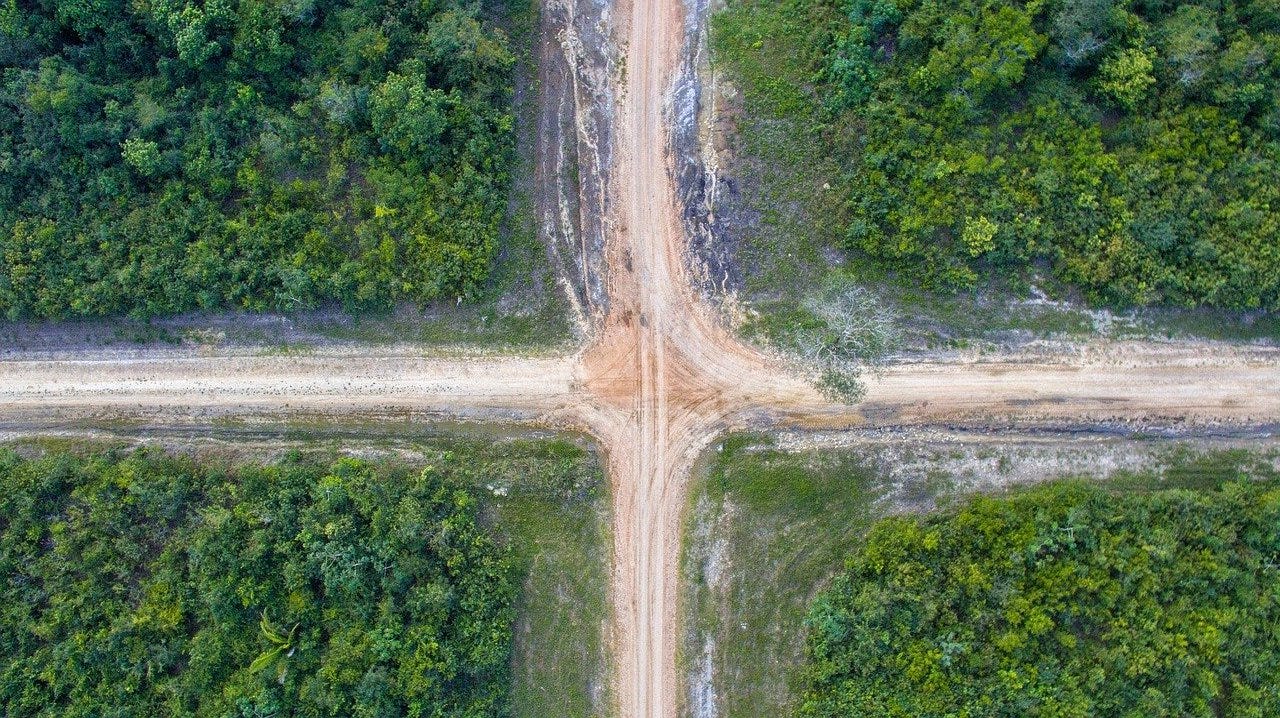
We’re at an exciting crossroads. Choices are being made today that will impact our planet for generations. Companies must soon decide: Will they continue to turn a blind eye (or support gentle greenwashing) to the agriculture-driven damage to global biodiversity? Or will they adopt a more whole-systems viewpoint to create positive impacts on multiple levels of life?
